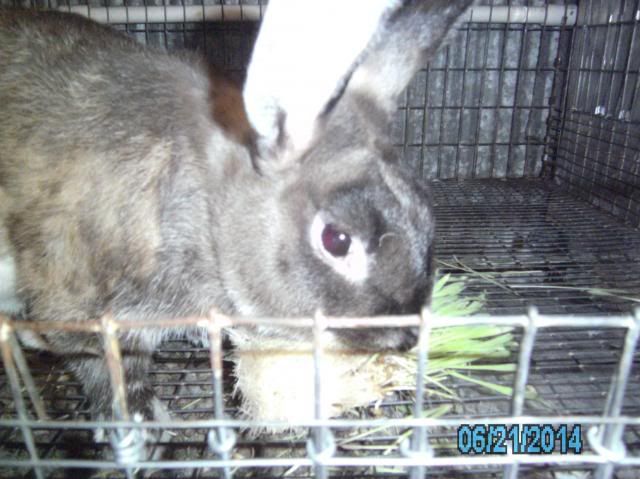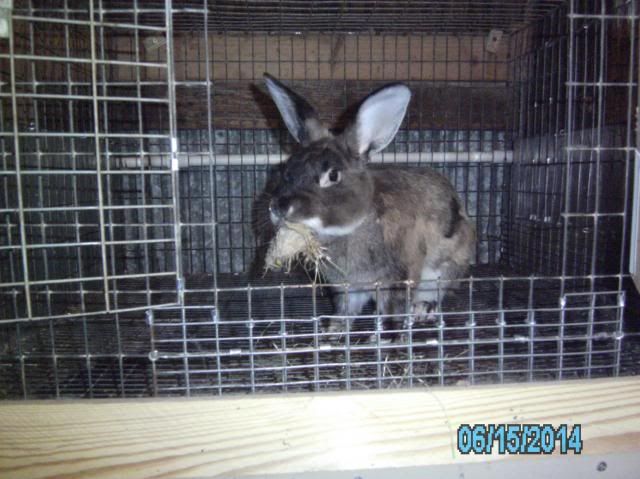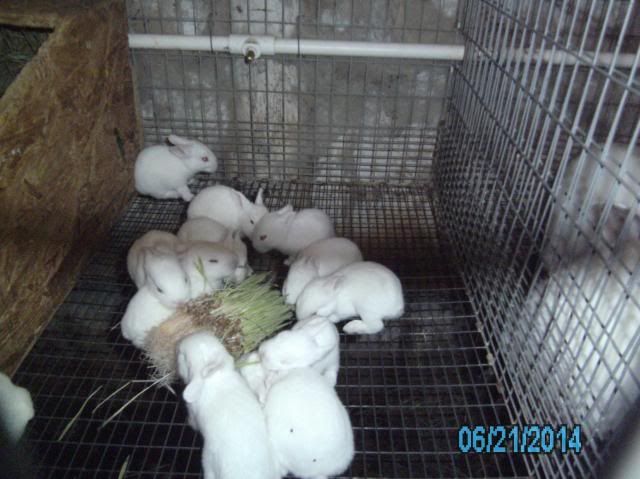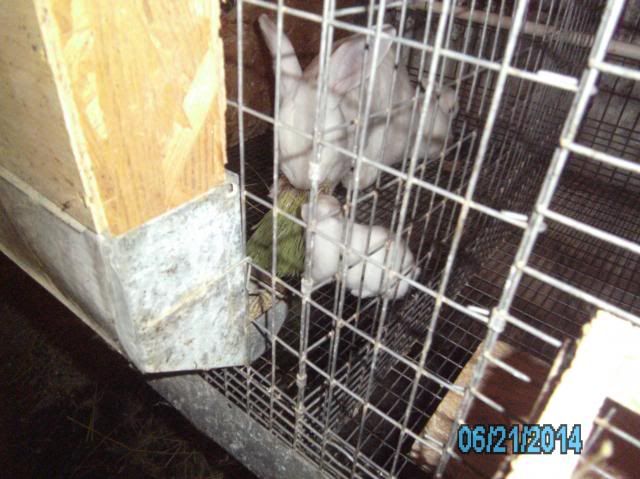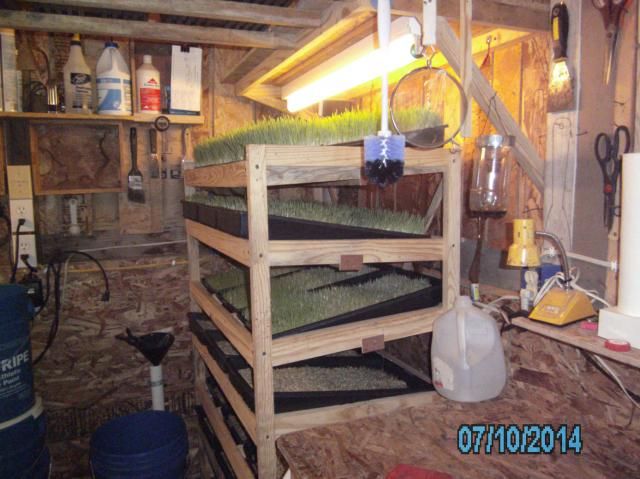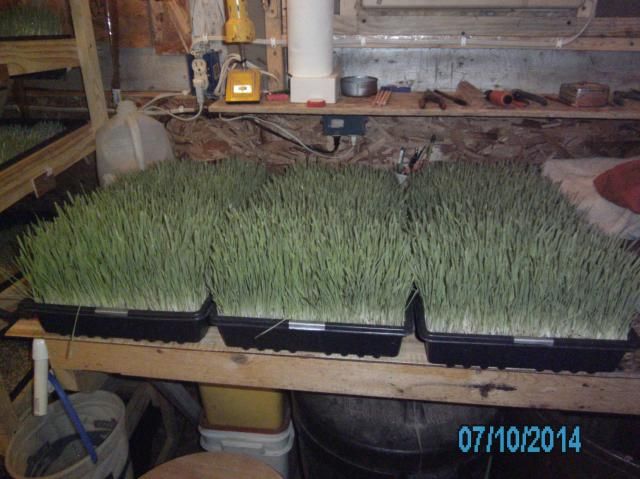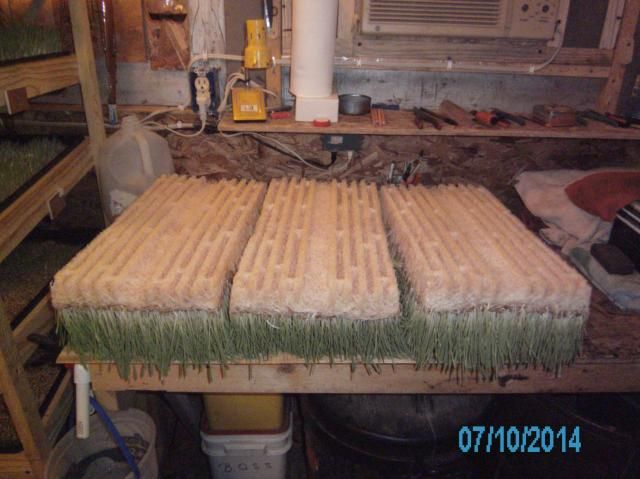MamaSheepdog":368dtl7e said:
grumpy":368dtl7e said:
With fodder costing under a nickel per
pound versus pellets costing 27.5 cents per pound, it's easy to see the potential.
A pound of fodder has a lot more water weight than pellets.
One of the ways that pet food companies bump their "meat" content in dog and cat food is to list "fresh" chicken, beef, or whatever, as opposed to "meal" which is already processed and dried.
I would try to figure the cost based on dried, more nutrient dense product rather than fresh to see if it really is worthwhile.
The exact same point made earlier this afternoon by the extension agent.
Of which, we agreed to disagree. My only objective in this whole process
was to come to a point that I could provide a food-source that was "wholesome"
and "equitable" in food value to a pellet. A "pellet" that I must take for
granted is "healthy" because....It says so on the label.
Maybe I'm wrong. I'm not scientifically educated enough to know DM from
any other type of "M". If I can provide a source of protein my stock will
eat and enjoy, then I've succeeded. "True"....it's a labor added that requires
more time and energy. I've spent the entire evening reading through countless
reports and studies concerning this very thing. "Dry Matter" comes up more
times than I've got fingers and toes. But, to what end should we be concerned
with? I'm at a loss when asked this type of inquiry. If the stock consumes
it and flourishes, then have we not succeeded?
The agent commented, "Well, it's 98% water. Remove the water and
you've got nothing."
My reply kind of shortened his breathing. "A cornstalk is nothing more
than a kernel of corn? Is that what you're saying?"
"Well, yes, it's worthless as food."
"What about silage?" Hasn't its growth changed its value?"
Round and round we go. That single seed of Barley "changed" when it
sprouted. To what degree and value, I'll leave that up to the scientists.
All I know is, thus far, most of the rabbits like it more and more each day.
They are noticeably eating fewer and fewer pellets, I can feed a portion
of Fodder along with a portion of pellets and they'll eat the green-stuff first.
Leaving a noticeable amount of pellets in their feeder by the next morning.
It's far too early to make any blanket statements. Maybe in six months, I
can come to a reasonable conclusion about time versus costs versus
overall health. Technically and scientifically the experts may be correct.
Just don't tell the Bumble-Bee. LOL.

:gnight:
grumpy.

































